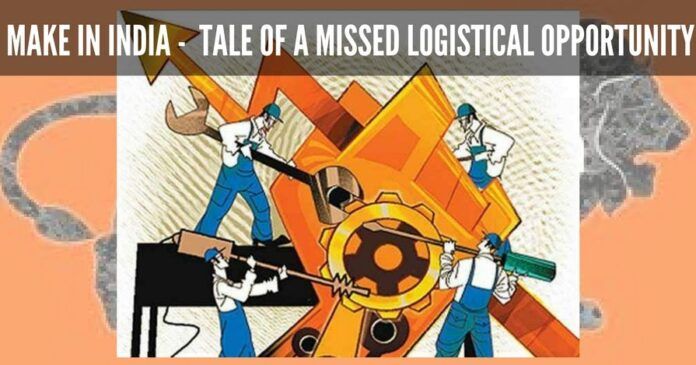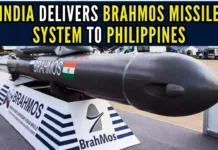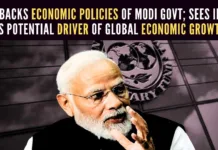
Modi government’s goal was to give the highest priority to Make in India
It’s been tough times for India’s jobs market
Although one is never sure of these exact numbers its stated some 1.5 million jobs were lost last year, according to the Centre for Monitoring Indian Economy, partly as a result of the demonetisation of high-value notes last November. Then, the goods and services tax, which kicked in from July 2017, sucked whatever little life was left out of the market, especially among small and medium businesses.
In a country expected to add over 280 million people to the job market by 2050, that ought to set off alarm bells
However, even when the economy was growing at a faster clip, the job market just wasn’t responding, a report by domestic rating agency CARE Ratings shows.
The tepid Job growth numbers are a far cry from what Mr Modi had promised in the run-up to his election as prime minister in 2014: that his government would add 10 million jobs. Instead, job creation under Modi Govt has been at an eight-year low as per reports.
In a country expected to add over 280 million people to the job market by 2050, that ought to set off alarm bells.
Of course, supporters of the current government argue that NDA Govt has done more for economic reforms than the previous Government. Maybe over time that will prove to be the case as well, but for now both the nature of economic growth and the Jobs market performance suggest that the impact of this government has been rather limited on the country’s economic prospects.
Its therefore only natural that Modi Govt is under criticism as they have been largely unable to fuel Jobs led economic growth in India across any sector leading to the sharpest drops in salaries & Jobs in the country.
Would like to draw attention towards a missed opportunity in India’s quest for Jobs led growth and the struggle to catch up with China as a Manufacturing powerhouse of the World.
Make in India was an ambitious programme to create Manufacturing led jobs growth announced by PM Modi for millions of Skilled, Unskilled and Semi-Skilled workers across the Country.
No large country can become rich without manufacturing the goods that are consumed or demanded by its people. Most services—especially the basic, low technology and low value-added services—will anyway be produced within the country. A country can move up the ladder of prosperity only if it can manufacture the goods and produce the services required by its people and also export a considerable part of those goods and services. Prime Minister Narendra Modi was therefore absolutely right when he stated that his government’s goal was to give the highest priority to ‘Make in India’ and called upon the world’s manufacturing companies to “Come and make in India”.
The aim was to develop the corridor as a “Global Manufacturing and Trading Hub” with infrastructure linkages like power plants, high capacity transportation, assured water supply and other things
When PM Modi promised to make India into a global hub of manufacturing, the project that needed Government’s timespan and attention were the Delhi-Mumbai Industrial Corridor Project.
The Delhi–Mumbai Industrial Corridor Project was a planned USD 100 billion industrial development project between India’s capital, Delhi and its financial hub, Mumbai touted as one of the world’s largest infrastructure projects and planned as a high-tech industrial zone spread across six states across the 1,500 km long Dedicated Freight Corridor which serves as its backbone. The aim was to develop the corridor as a “Global Manufacturing and Trading Hub” with infrastructure linkages like power plants, high capacity transportation, assured water supply and other things that would further the objective of building a world-class infrastructure to aid manufacturing – the very essence of Make in India !!!!
The project had received a major boost from Japan thanks to an agreement to fund the project development by the Japanese and Indian governments equally.
An advantage for Modi Govt from an execution point of view was that DMIC project was in the BJP ruled States so by progressively fast-tracking its completion the Govt could have set up a template for the rest of the States of the Indian Union to follow and also prove to the World that India too can timely execute mega infrastructure projects of Size and Scale.
The other big advantage for Modi Govt was that Japanese with huge Cash stockpile have been keen to invest this capital in an emerging economy like India to generate businesses for Japanese firms. Against this backdrop, India is the best destination as the only country where Japan still has an upper hand and which has a desire for, but also a near visceral aversion to Chinese investments.
Now consider what has happened to this prestigious project: Delhi-Mumbai Industrial Corridor is a sad tale of abandonment and delays as almost a decade after its launch, the project still faces big challenges in execution and implementation and thus a great big missed opportunity for Make in India.
Now the latest news is even as work on DMIC has only just started picking up momentum in the last couple of years, the Modi administration has sought to dilute the focus on this corridor. The Delhi-Mumbai Industrial Corridor Project Implementation Trust Fund through which Rs 17,500 crore was to be injected into DMIC has now been re-constituted to cater to four other such corridors planned across India.
Mr Amitabh Kant has since been moved to Niti Aayog and as of 2015 he is the CEO, NITI Aayog. a Government institution for catalysing economic development in India
Earlier, the money was meant only for DMIC. Now the money would have to be shared with four other such planned corridors across India. With DMIC struggling to show results all these years, the Modi government seems to have decided to put its eggs in other baskets.
The difference between master plans on the drawing board and progress on the ground indicates that the Government is not learning from past history and continues to announce projects which never take off on the ground.
A more practical approach would have been to establish a Mission mode Implementation team of Ministers, Bureaucrats and Field Experts to identify the DMIC Project’s weak nodes leading to its delays thus far and work with PMO and State Governments to systematically remove the impediments in its implementation. For eg Land Pooling as a viable alternative to land acquisition could have helped in circumventing the difficulties involved in acquiring clear, marketable and litigation-free appropriately sized contiguous land parcels for infrastructure development – as Land a sensitive issue in various parts of the country. Pooling is fairer to the landowner who loses only a portion of his land and whatever he retains is worth much more than his original holding and thus a good alternative option to promote key Govt infra projects requiring large Land parcels. It’s been used internationally for urban infra development projects in Europe & Asia.
Instead the wheels of progress for this ambitious project have moved at a snail’s pace – most of the corridor is still plagued by land acquisition issues, many big-ticket projects’ detailed reports have only recently been approved a decade after their conception, big power projects envisaged in the corridor have been abandoned, and if not for the Japanese, the project wouldn’t have shown even the modicum of momentum that has been visible over the last few years.
While the project was conceived in 2009 by the previous Congress-led government, Prime minister Narendra Modi made it one of his leadership’s top priorities but sadly the plans rest right there and not moving as expected further.
The DMIC could still be the pioneer experimental model for many such industrial corridors proposed across India to kickstart Make in India. The government says it wants as many as 18 such corridors to criss-cross the country in the future.
Masterplans for the eastern and southern corridors have already been approved – but then given how a lack of Political and Economic consensus has led to red flags being raised by people who reside between Delhi and Mumbai, it seems unlikely they will follow seamlessly.
Billed as the biggest industrial project for Northwestern India the Delhi-Mumbai Industrial corridor today is staring at an uncertain future.
Delhi-Mumbai industrial corridor a reality by 2017: Amitabh Kant – CEO & MD of DMIC was quoted as a man behind the country’s most ambitious infrastructure project back then in 2013.
Mr Amitabh Kant has since been moved to Niti Aayog and as of 2015, he is the CEO, NITI Aayog. a Government institution for catalysing economic development in India.
“Make in India” needs Delhi-Mumbai Industrial Corridor and in its smooth implementation lies the secret to creating a successful template for unlocking India’s hidden potential in creating millions of Manufacturing led Jobs and GDP growth in India.
An eternally earnest hope is that Modi Govt will summon Political Will and power of purpose to clear the and resistance to DMIC project and implement it first successfully and speedily for all other such projects to follow seamlessly.
As an apt relevant saying goes “ Devil lies not in the details but in its implementation”.
Note:
1. Text in Blue points to additional data on the topic.
2. The views expressed here are those of the author and do not necessarily represent or reflect the views of PGurus.
- Why India should have different players for different formats - November 26, 2021
- India’s Trade Policy Blues - April 12, 2021
- The idea of a Modern Secular Bharat– Part 2 - October 9, 2018










